|
-
Very Active Member
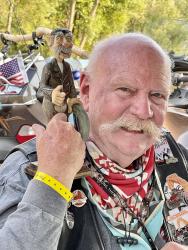

 Originally Posted by Adventurer

Okay, went for a ten mile ride, stopped the motor and checked the oil level within 2 minutes of stopping the engine. Oil level read completely full, up to the upper ball on the dipstick.
Immediately restarted the engine, let it idle for 10 minutes, stop the engine and within 2 minutes checked the oil again and got the exact same reading as the first check above.
*after stopping the bike at the ten mile mark, I did not move it until after both readings were completed, i.e. both readings taken with the bike in the exact same position no chance in different levelness (word?) having any affect on the reading.
That’s the last time I’ll let it idle 10 minutes just to check the oil.
Thanks for doing that little bit of research. Bob have you thought of using Lew's suggestion? Or to make a mark at the right level.

Happy TRAils/NSD
Paul
2012 RT L
AMA 25 years Life Member
TRA
PGR
Rhino Riders Plate #83
Venturers #78
TOI

-
Very Active Member
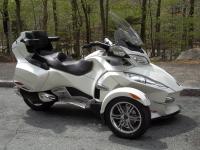

 Originally Posted by Adventurer

Okay, went for a ten mile ride, stopped the motor and checked the oil level within 2 minutes of stopping the engine. Oil level read completely full, up to the upper ball on the dipstick.
Immediately restarted the engine, let it idle for 10 minutes, stop the engine and within 2 minutes checked the oil again and got the exact same reading as the first check above.
*after stopping the bike at the ten mile mark, I did not move it until after both readings were completed, i.e. both readings taken with the bike in the exact same position no chance in different levelness (word?) having any affect on the reading.
Thatís the last time Iíll let it idle 10 minutes just to check the oil.
I let it run till the fan runs, then shut it down, check, good to go!!!
-

 Originally Posted by Mikey

I let it run till the fan runs, then shut it down, check, good to go!!!
Do you mean after riding for 9 miles or more you let it idle until the fan runs or do you mean from a cold start up you let it idle until the fan runs without any miles driven?
-

I am with you shipmate....(USN USS Yosemite AD19)...I have 300 miles on odometer and following the owners manual that tells you to check the oil at 300miles...I have yet been able to see the oil level on the dipstick. With or without 10 mile and 10 minutes....is there a secret to seeing clean oil on a yellow dipstick? I am open to any suggestions.
-
Ozzie Ozzie Ozzie
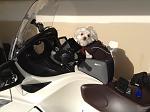
Last edited by Peter Aawen; 06-22-2021 at 08:26 PM.
2013 RT Ltd Pearl White
Ryde More, Worry Less!
-

Thanks, I'll give it a go this afternoon.....really can't understand why BRP made the whole oil thing so involved...Thanks again...
-
Very Active Member


 Originally Posted by Adventurer

Do you mean after riding for 9 miles or more you let it idle until the fan runs or do you mean from a cold start up you let it idle until the fan runs without any miles driven?
in the shop from a cold start.
-
Very Active Member


 Originally Posted by hank573

Thanks, I'll give it a go this afternoon.....really can't understand why BRP made the whole oil thing so involved...Thanks again...
Let me offer a variation of an explanation above that may help you understand why the procedure is what it is. Think of a tank with three connections. One is at the top where oil is pumped into the tank from a small pool in the sump under the crankshaft. The second one is at the bottom that connects to the oil pump so oil from the tank is pumped through all the engine parts. The third is a small connection to the sump under the crankshaft. When the engine is running the oil sucked up from the sump is the same flow rate as the oil that drains to the sump via the small connection plus the oil pumped throughout the engine. The oil pumped throughout the engine drains down to the sump. When you shut down the engine the oil flow via the pumps into and out of the tank stops. But oil continues to drain down to the sump through the small connection. Checking the oil level in the sump wouldn't work because it keeps going up as the tank drains down. Checking oil level in the tank works as long as you check within a short time after shutting off the engine. If you wait too long the tank will drain down and oil level will be low. In fact, if you wait a really long time, like a few months, the oil in the tank will drain down so far it won't touch the dipstick.
So the reason for running the engine for awhile first and then checking within a couple of minutes is to make sure the oil flow, i.e., the amount going into and out of the tank, has been stabilized and then is measured before it drops very much. The high and low points on the dip stick are the oil levels in the tank the engine designers have determined provide the ideal amount of oil for the engine to function properly.
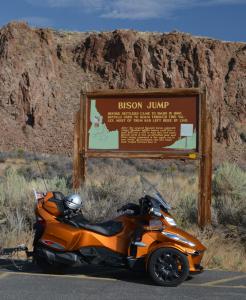
2014 Copper RTS
Tri-Axis bars, CB, BajaRon sway bar & shock adjusters, SpyderPop's Bumpskid, NBV peg brackets, LED headlights and modulator, Wolo trumpet air horns, trailer hitch, custom trailer harness, high mount turn signals, Custom Dynamics brake light, LED turn signal lights on mirrors, LED strip light for a dash light, garage door opener, LED lights in frunk, trunk, and saddlebags, RAM mounts and cradles for tablet (for GPS) and phone (for music), and Smooth Spyder belt tensioner.
-

 Originally Posted by IdahoMtnSpyder

Let me offer a variation of an explanation above that may help you understand why the procedure is what it is. Think of a tank with three connections. One is at the top where oil is pumped into the tank from a small pool in the sump under the crankshaft. The second one is at the bottom that connects to the oil pump so oil from the tank is pumped through all the engine parts. The third is a small connection to the sump under the crankshaft. When the engine is running the oil sucked up from the sump is the same flow rate as the oil that drains to the sump via the small connection plus the oil pumped throughout the engine. The oil pumped throughout the engine drains down to the sump. When you shut down the engine the oil flow via the pumps into and out of the tank stops. But oil continues to drain down to the sump through the small connection. Checking the oil level in the sump wouldn't work because it keeps going up as the tank drains down. Checking oil level in the tank works as long as you check within a short time after shutting off the engine. If you wait too long the tank will drain down and oil level will be low. In fact, if you wait a really long time, like a few months, the oil in the tank will drain down so far it won't touch the dipstick.
So the reason for running the engine for awhile first and then checking within a couple of minutes is to make sure the oil flow, i.e., the amount going into and out of the tank, has been stabilized and then is measured before it drops very much. The high and low points on the dip stick are the oil levels in the tank the engine designers have determined provide the ideal amount of oil for the engine to function properly.
Is there a printable skematic somewhere that would show the oil flow process that you so eloquently described?
-
Very Active Member
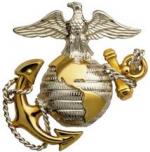

An excellent explanation, Mac! I agree w/- 2dogs; a schematic would be great to put this issue to bed for good.
Artillery lends dignity to what would
otherwise be a vulgar brawl.
******************************
Cognac 2014 RT-S
-
Very Active Member


I think there's a diagram in the service manual but I'm away from home until after the Fourth and don't have a copy on my laptop.

2014 Copper RTS
Tri-Axis bars, CB, BajaRon sway bar & shock adjusters, SpyderPop's Bumpskid, NBV peg brackets, LED headlights and modulator, Wolo trumpet air horns, trailer hitch, custom trailer harness, high mount turn signals, Custom Dynamics brake light, LED turn signal lights on mirrors, LED strip light for a dash light, garage door opener, LED lights in frunk, trunk, and saddlebags, RAM mounts and cradles for tablet (for GPS) and phone (for music), and Smooth Spyder belt tensioner.
-
Active Member


At lest they give you 2 minutes to do the actual checking. The Ryker gives you 10 seconds to get it done.
-
Active Member


I agree with the less-than-great manual. I was trying to find the VIN on my 2021 RTL. Take a look at this drawing from the manual. Since it doesn't state which side of the bike to look at for the swing arm, I assumed left because it is a left view of the bike. Stupid me,  it was on the right. it was on the right.
20210624_113550.jpg
-
Very Active Member


How does one say "s****y diagram" in French?
Artillery lends dignity to what would
otherwise be a vulgar brawl.
******************************
Cognac 2014 RT-S
-

 Originally Posted by rv6a

I agree with the less-than-great manual. I was trying to find the VIN on my 2021 RTL. Take a look at this drawing from the manual. Since it doesn't state which side of the bike to look at for the swing arm, I assumed left because it is a left view of the bike. Stupid me,  it was on the right.
20210624_113550.jpg
Weird my vin plate on my 2021 RTL is on the left side of the swing arm. Your bike must have been built on a Monday or a Friday afternoon 
-
Active Member
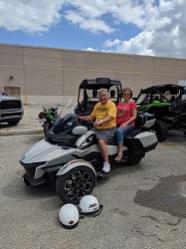

 Originally Posted by IdahoMtnSpyder

Let me offer a variation of an explanation above that may help you understand why the procedure is what it is. Think of a tank with three connections. One is at the top where oil is pumped into the tank from a small pool in the sump under the crankshaft. The second one is at the bottom that connects to the oil pump so oil from the tank is pumped through all the engine parts. The third is a small connection to the sump under the crankshaft. When the engine is running the oil sucked up from the sump is the same flow rate as the oil that drains to the sump via the small connection plus the oil pumped throughout the engine. The oil pumped throughout the engine drains down to the sump. When you shut down the engine the oil flow via the pumps into and out of the tank stops. But oil continues to drain down to the sump through the small connection. Checking the oil level in the sump wouldn't work because it keeps going up as the tank drains down. Checking oil level in the tank works as long as you check within a short time after shutting off the engine. If you wait too long the tank will drain down and oil level will be low. In fact, if you wait a really long time, like a few months, the oil in the tank will drain down so far it won't touch the dipstick.
So the reason for running the engine for awhile first and then checking within a couple of minutes is to make sure the oil flow, i.e., the amount going into and out of the tank, has been stabilized and then is measured before it drops very much. The high and low points on the dip stick are the oil levels in the tank the engine designers have determined provide the ideal amount of oil for the engine to function properly.
Two points: 1) Harleys have had dry sumps for decades. If you let one sit for extended periods the oil will drain from the tank into the crankcase. Unsuspecting owners fill the tank before starting the engine and blow oil all over the place! This issue is not a BRP only phenomenon. 2) The reason to idle for 10 minutes after the 9 mile ride is to allow oil that was trapped in the upper sections of the engine and trans to drain to the low points so the scavenger pumps can pump it back to the tank. This is probably only a concern after "spirited" riding.
-
Ozzie Ozzie Ozzie


 Originally Posted by Adventurer

Weird my vin plate on my 2021 RTL is on the left side of the swing arm. Your bike must have been built on a Monday or a Friday afternoon 
Could be...  Or maybe the Production line Worker was just facing the other way & so didn't realise they were on the 'other' side of the Spyder?!? Or maybe the Production line Worker was just facing the other way & so didn't realise they were on the 'other' side of the Spyder?!? 
2013 RT Ltd Pearl White
Ryde More, Worry Less!
-
Active Member


I bet if you look at your manual it will be a right side view 
-
-

 Originally Posted by IdahoMtnSpyder

Let me offer a variation of an explanation above that may help you understand why the procedure is what it is. Think of a tank with three connections. One is at the top where oil is pumped into the tank from a small pool in the sump under the crankshaft. The second one is at the bottom that connects to the oil pump so oil from the tank is pumped through all the engine parts. The third is a small connection to the sump under the crankshaft.
Very nicely stated  , but why does that third connection exist? , but why does that third connection exist?
Oil gets pumped through the engine, collects in the sump and gets pumped back to the reservoir. There should be no need to have oil bleed back to the sump, just to have it pumped back to the reservoir when you start the engine.
.
HER ride:
2017 RT-S SE6 Pearl White
My rides:
2000 Honda GL1500SE
1980 Suzuki GS850G
-
Very Active Member


Don't know, and since I don't have my manual copy with me I can't see if there is an explanation in it.

2014 Copper RTS
Tri-Axis bars, CB, BajaRon sway bar & shock adjusters, SpyderPop's Bumpskid, NBV peg brackets, LED headlights and modulator, Wolo trumpet air horns, trailer hitch, custom trailer harness, high mount turn signals, Custom Dynamics brake light, LED turn signal lights on mirrors, LED strip light for a dash light, garage door opener, LED lights in frunk, trunk, and saddlebags, RAM mounts and cradles for tablet (for GPS) and phone (for music), and Smooth Spyder belt tensioner.
-
Very Active Member
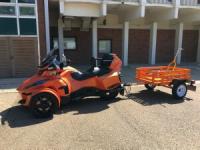

 Originally Posted by Steve W.

Very nicely stated  , but why does that third connection exist?
Oil gets pumped through the engine, collects in the sump and gets pumped back to the reservoir. There should be no need to have oil bleed back to the sump, just to have it pumped back to the reservoir when you start the engine.
.
Maybe so the return pumps are not running dry when you start up cold? 
 Posting Permissions
Posting Permissions
- You may not post new threads
- You may not post replies
- You may not post attachments
- You may not edit your posts
-
Forum Rules
|

